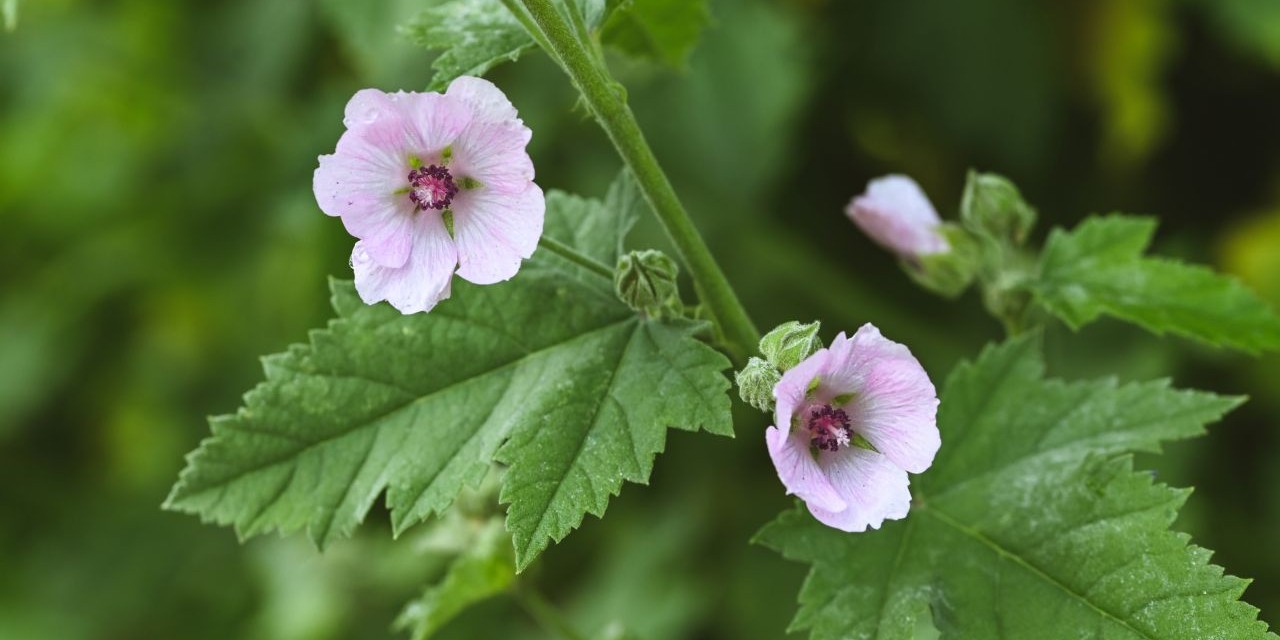
Plant of The Week: Marshmallow
Our plant of the week is the Marsh Mallow or Marshmallow which is related to the Hollyhock and in the same family as the hibiscus. The most well-known variety of Marsh Mallow – both as a garden shrub and as a medicinal plant – is Althaea Officinalis.
A few of the common names for this plant are White Mallow and Joseph’s Staff. And, yes, this plant used to be used in the making of edible, confectionary marshmallows!
The History of Marsh Mallow
The name for the Althaea genus comes from a Greek word that means “heal”. The Ancient Greeks believed that Marshmallow’s greatest value lay in its ability to stimulate the body to heal itself.
There are records of this plant being used by the Romans who also considered it to be a cure-all. It was specifically recommended for stomach problems, coughs, sore throats, to purify the blood, and was applied topically to wounds, burns, and dry skin.
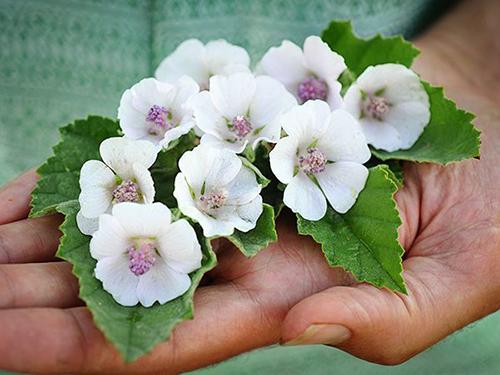
In addition to widespread medicinal use, this herb was eaten as a vegetable in Europe and the Middle East, particularly during times when food was scarce.
Where This Plant is Found
Marshmallow is thought to be indigenous to Western Asia, Europe, and North Africa. However, it is now also found growing in many parts of the United States, Canada, and Australia.
This hardy plant particularly thrives in moist locations or near the coast. It will even grow in salt marshes.
How to Identify Marsh Mallow
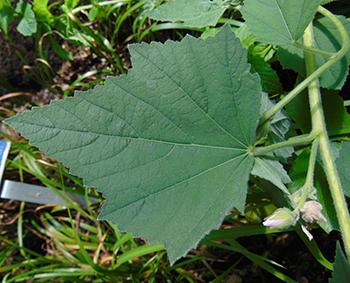
The Marshmallow is a perennial that, when fully grown and in flower, stands at an impressive 3 – 4 feet / 1 – 1 ¼ meters high.
They can reach a width of 2 ½ feet or ¾ meter. They are strong, wiry plants with branched stems.
- Leaf: The soft leaves of this herb are grey-green in color.
They are also covered in fine hair or fuzz and are similar in shape to Maple leaves.
 Flower: The plant forms small clusters of flowers from mid-summer to early autumn. The blooms appear at intervals along the length of the stem.
Flower: The plant forms small clusters of flowers from mid-summer to early autumn. The blooms appear at intervals along the length of the stem.
The flowers have five, heart-shaped petals and blooms range in color from white to a very pale pink or mauve.
The flowers mature into brown seed heads or pods each of which contains dozens of black seeds.
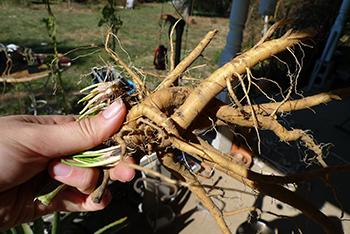
- Root: This herb has a root system that consists of many roots each of which is about the thickness of a pencil.
There are multiple smaller roots branching out a short distance from the main root.
⇒ Plant Identification Guide – 400 Wild Plants That You Can Forage For (Video)
How to Grow Marsh Mallow
Marshmallow is a hardy plant that can be grown with ease. They do not mind whether they are planted in full sun or partial shade and can thrive in both exposed and sheltered spots. This plant is also not fussy about soil type and will grow in loamy, clay, chalky, or sandy ground and regardless of pH too. However, this herb does not do well in containers.
There are several ways you can plant Marshmallow:
 Seeds: You can buy seeds or harvest them for existing plants. In either case, you will need to store the seeds in the refrigerator so that they think winter is over and germination is triggered. This process is called stratification.
Seeds: You can buy seeds or harvest them for existing plants. In either case, you will need to store the seeds in the refrigerator so that they think winter is over and germination is triggered. This process is called stratification.
Loose seeds should be placed on a damp paper towel inside a plastic bag (unsealed). Bought, packeted seeds can be refrigerated in the packet. In either case, store them this way for 3 to 4 weeks. Seeds can be seeded or planted in potting soil in containers until the seedlings are established or directly into your garden.
 Root division: These plants die back and become dormant in autumn. You do not need to dig up the plant. Use a sharp spade to cut down through the center of the root mass. Remove one half from the soil and replant it immediately. Fill in the gap next to the original plant so the roots are secure.
Root division: These plants die back and become dormant in autumn. You do not need to dig up the plant. Use a sharp spade to cut down through the center of the root mass. Remove one half from the soil and replant it immediately. Fill in the gap next to the original plant so the roots are secure.
When you are ready to plant them, place these herbs about 1 foot or 30 centimeters apart. Once planted, always keep the soil your Marshmallow plants are moist, especially in the first year. However, the ground should be well-drained, though, so the soil doesn’t become too wet or waterlogged.
Once established, Althaea Officinalis will grow very well and really look after themselves. They can even cope with very heavy frosts and, as they are perennials, they will shoot again in spring. They are pollinated by bees and self-sow so you will have more plants each year and – given free reign – the area they grow in will get bigger each season.
How to Harvest This Plant
It is best not to harvest from a plant during its first year to give it the best chance to grow robustly. The harvesting method varies depending on which part of the Marshmallow plant you are collecting.
 Roots should only be harvested in late autumn. You simply remove part of the root mass – as you would to divide a plant – so that you do not remove or kill the entire plant.
Roots should only be harvested in late autumn. You simply remove part of the root mass – as you would to divide a plant – so that you do not remove or kill the entire plant.
The harvested roots must immediately be thoroughly cleaned, chopped into ½ inch or 1 ¼ centimeter pieces, and dried.
 Leaves can be collected at any time during summer but are best harvested when the plant has finished flowering. Do not remove too many leaves at one time as the plant’s health may be affected.
Leaves can be collected at any time during summer but are best harvested when the plant has finished flowering. Do not remove too many leaves at one time as the plant’s health may be affected.
Like the roots, the leaves must be thoroughly dried. Fresh, well-washed leaves can even be included – in small quantities – in sauces or salads.
If you do not have access to plants, you can of course buy dried Marshmallow from reputable health shops.
What Marsh Mallow is Good For and The Natural Remedies Made From It
The property or ingredient in the Marshmallow plant, especially the leaves, that make it so valuable is the high content of mucilage. Mucilage is a gelatinous substance containing polysaccharides and protein.
Related: Homemade Marshmallow Healing Tonic
This slightly sticky or slimy-feeling substance is included in various remedies and is what makes Marshmallow so effective when used to:
- Ease inflammation in the digestive system including:
- Indigestion
- Heartburn
- Peptic ulcers
- Soothe inflammation and irritation in the mouth
- Soothe inflammation and irritation in the throat and ease coughing
- Prevent or treat constipation
- Ease inflammation associated with minor wounds and burns, dry skin, skin eruptions such as acne and boils, splinters, abrasions, and insect bites and stings
- Aid with the symptoms of urinary tract infections and kidney stones
- Ease arthritis and gout
- Stimulate the kidneys/act as a diuretic.
Different parts of the plant are used to produce different preparations with various applications. For example, the leaves are the main ingredient that is used in ointments that are used for skin issues.
What Parts of The Plant are Used in Remedies?
Much of the Marshmallow plant can be used for medicinal or health-giving applications. The leaves and flowers are used, and the leaves contain good amounts of mucilage.
The roots are particularly valuable for the reasons discussed above.
A DIY Marsh Mallow Recipe
There are several recipes that use this plant, including the confectionery, but we have selected one that is easy and – importantly – produces a preparation that has multiple applications: Cold Marshmallow Infusion.
Ingredients
- 50 grams of dried Marshmallow Root
- Lukewarm (98 and 1030 Fahrenheit or 36.5 to 39.50 Celsius) filtered water.
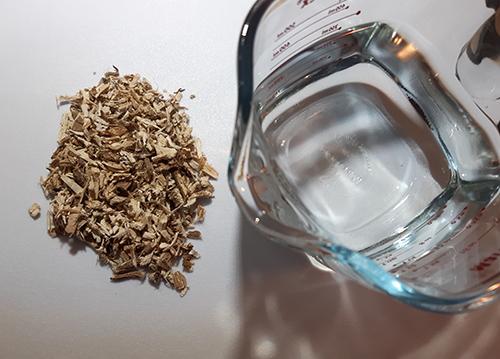
Method
- Fill a clean jar ¼ full of dried Marshmallow root
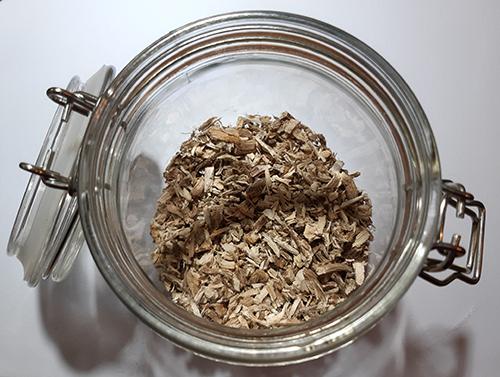
- Cover the herb with lukewarm water
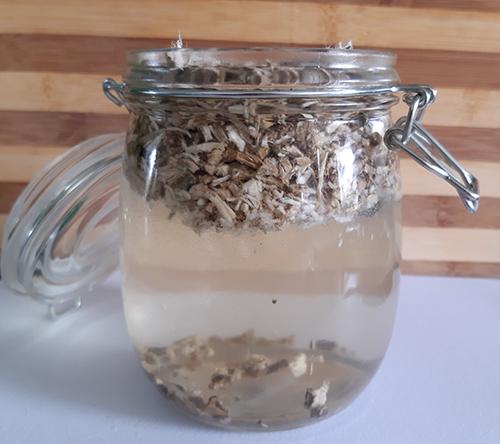
- Gently stir the mixture so that all the root material becomes wet
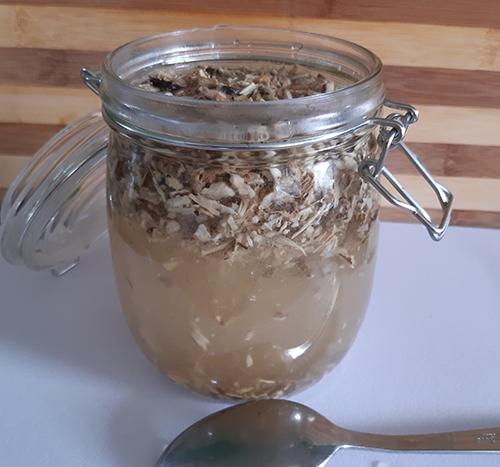
- Cover the jar with an airtight lid

- Leave the mixture to infuse for 4 to 8 hours
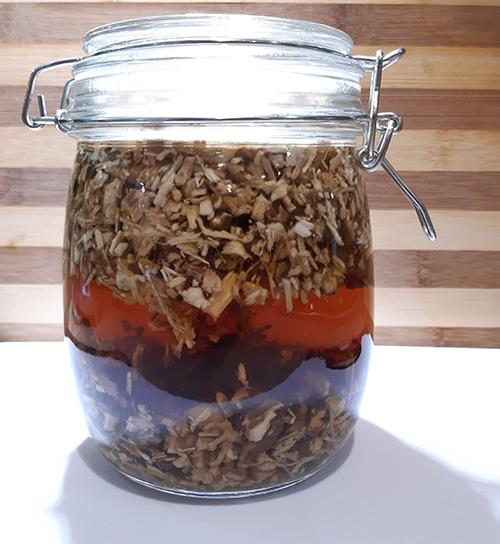
- Strain the mixture to remove the plant material. The liquid you obtain should be pale yellow and slightly viscous.

If you only want a small quantity, place 1 heaped teaspoon of the dried root into a cup of lukewarm water. Allow it to steep overnight in the refrigerator and sip the mixture the following morning.
Uses
As indicated, you can use this infusion for several purposes:
- As a mouthwash to ease mouth ulcers, inflamed gums, or cuts on the cheeks or tongue
- You can gargle with – and then swallow – this mixture to soothe a sore throat
- Sipping this infusion eases gastric problems such as indigestion, inflammation, and – with regular use – constipation.
- It can be used as a topical wash for minor wounds and burns.
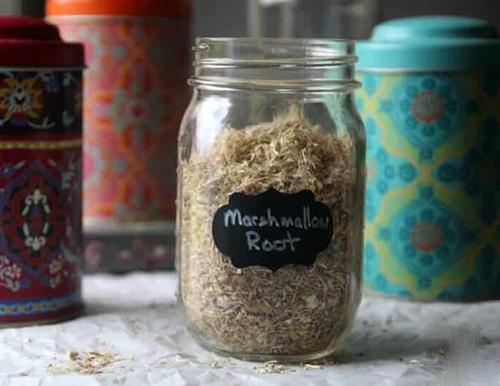
And yes, this infusion can also be used to make traditional marshmallows… but that’s a separate recipe!
Dosage
The dose or amount used will vary depending on (a) what the remedy is being used for and (b) the type of preparation involved. For example, standard doses include:
- Powdered root: 6 grams daily
- Leaf: 10 grams daily
- Syrup: 10 grams ounces daily
- Cream or ointment: applied 3 times a day
- Mouthwash or gargle: 2 grams in 240 milliliters of cold water (never use warm or hot water).
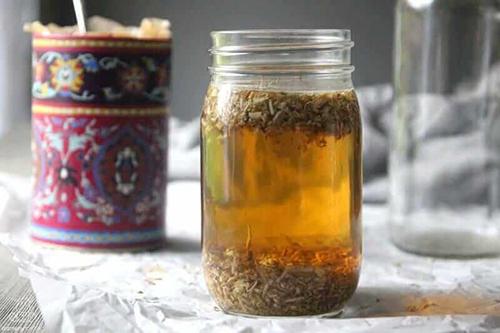
Preparations that are bought rather than home-made will carry dosage and use instructions on the packaging. These should be read carefully and adhered to.
How to Preserve This Plant
As with most plants used for health and wellness preparations, the best way to preserve material is by drying it. With Marsh Mallow, it is the roots that are dried. Here is how:
- Harvested roots should be very well washed before you chop or grate them.
- It is essential that the plant matter is very well dried. Place the chopped or grated roots onto a tray and into an oven that is on low heat.
- Check on the roots regularly and move them around so all the pieces become warm and can dry out and because you do not want to burn the roots. You will know they are ready to come out when they are brittle and hard to the touch.
- Remove the tray from the oven and leave the root matter to cool down.
- You can then store them in a labeled (name and date) and airtight container.
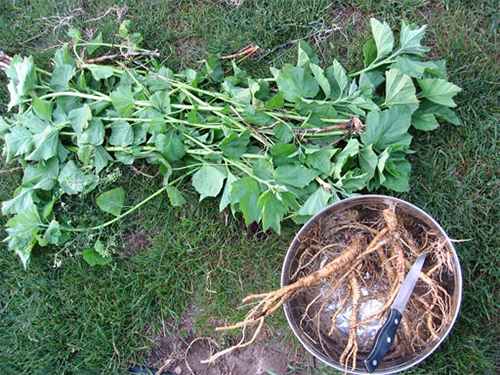
Ensure that the dried root is not exposed to any moisture or it will become moldy.
Related: How To Properly Dry Plants for Medicine
What Plants Resemble Marsh Mallow?
Two similar plants that often get confused are Marsh Mallow (Althaea Officinalis) and Hollyhock (Alcea Rosea). A quick glance at these two and it is easy to see how they can be mistaken for each other.
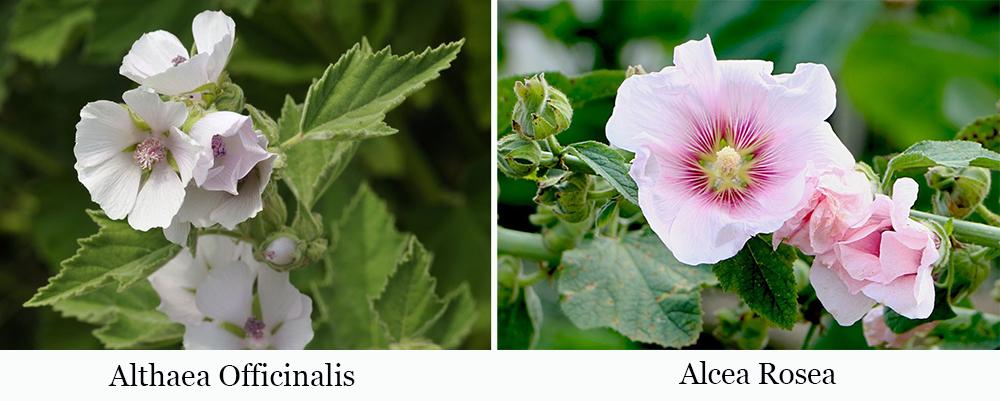
Both plants belong to the same family of Malvaceae, and so they do share many common characteristics. The flower is the most obvious similarity. Resembling a hibiscus flower, the Marshmallow is very showy in shades of pink, red, and white. The flower of the hollyhock is also very pretty and in similar shades. Both plants can be annuals, biennials, or perennials, although the Marshmallow is more often seen as a shrub in gardens while the hollyhock is typically a biennial with a stalk of flowers during its second year.
Warning and Cautions
It appears that there are no known contraindications in terms of harmful interactions with medications and drugs. Some warnings include:
- Avoid using this plant if you are pregnant or breastfeeding as safety levels are unknown
- Diabetic patients should avoid using Marshmallow regardless of whether they are on insulin or oral medication
- The effects of topical corticosteroids may be magnified by this herb
- As with any plant substance, there is the possibility of an allergic reaction.
You may also like:
 Plant of The Week: St. John’s Wort
Plant of The Week: St. John’s Wort
45 Herbal Protocols for Common Ailments (Video)
Best Herbs for Lungs and Respiratory Support
How to Make an Immunity Boosting Shot with Celery, Spinach, Ginger, Lemon, and Manuka Honey








 Flower: The plant forms small clusters of flowers from mid-summer to early autumn. The blooms appear at intervals along the length of the stem.
Flower: The plant forms small clusters of flowers from mid-summer to early autumn. The blooms appear at intervals along the length of the stem. 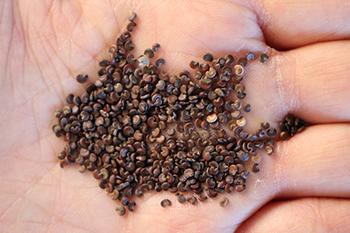 Seeds: You can
Seeds: You can 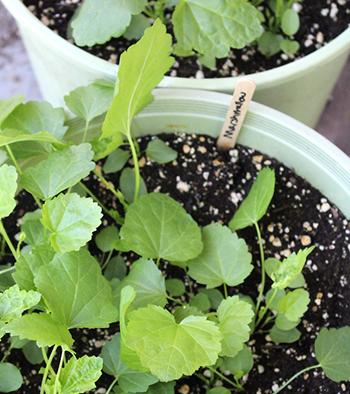 Root division: These plants die back and become dormant in autumn. You do not need to dig up the plant. Use a sharp spade to cut down through the center of the root mass. Remove one half from the soil and replant it immediately. Fill in the gap next to the original plant so the roots are secure.
Root division: These plants die back and become dormant in autumn. You do not need to dig up the plant. Use a sharp spade to cut down through the center of the root mass. Remove one half from the soil and replant it immediately. Fill in the gap next to the original plant so the roots are secure.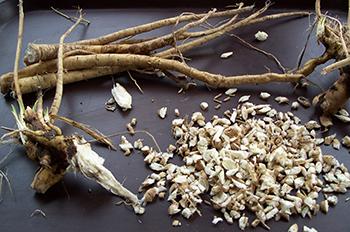 Roots should only be harvested in late autumn. You simply remove part of the root mass – as you would to divide a plant – so that you do not remove or kill the entire plant.
Roots should only be harvested in late autumn. You simply remove part of the root mass – as you would to divide a plant – so that you do not remove or kill the entire plant. 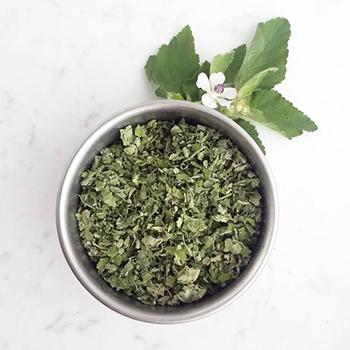 Leaves can be collected at any time during summer but are best harvested when the plant has finished flowering. Do not remove too many leaves at one time as the plant’s health may be affected.
Leaves can be collected at any time during summer but are best harvested when the plant has finished flowering. Do not remove too many leaves at one time as the plant’s health may be affected.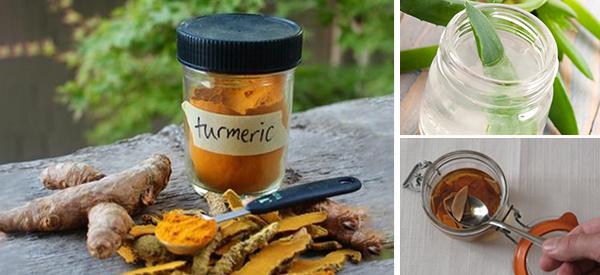
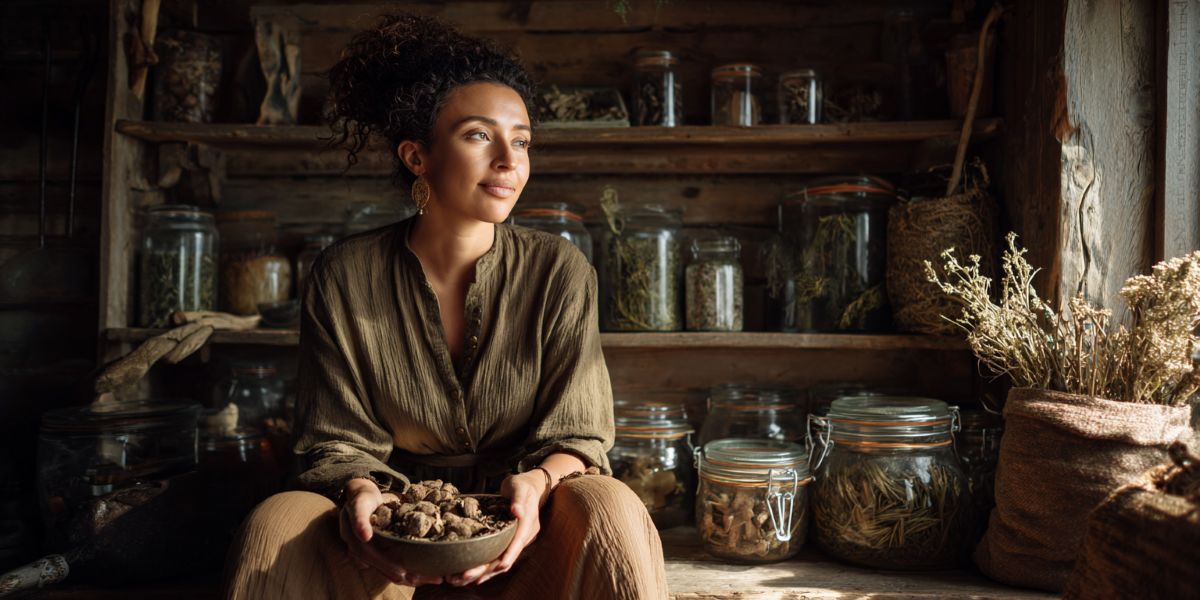
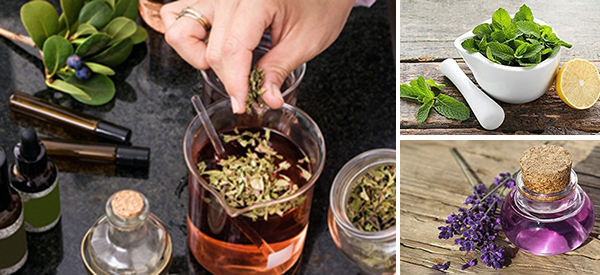
I have some seeds that I wanted to plant and harvest for medicinal purposes. I ADORE the hibiscus family and really appreciate the thoroughness of this article. The very end of which made me sad. I am type 2 diabetic and didn’t know I should avoid it. Does it increase blood sugars? I do eat okra, roselle, hibiscus, etc. and haven’t noticed any bad effects so it must be just the marsh mallow? Great job on this article and pictures!
Hi Mary,
Thank you so much for your feedback.
We really appreciate it.
Marshmallow is generally considered safe. It has no reported side effects.
However, an excessive amount of marshmallow root might cause blood sugar to drop to dangerous levels, particularly if you use this herb in conjunction with other diabetic medications.
God bless!
Very thorough article (as they all are!) but would really appreciate if the measurements could also be given in standard measure such as teaspoon, tablespoon, ounces, etc. and not just in grams, which requires me bringing up a conversion chart every time. I have the book and love it, and love this site as well!
Hi Gail,
Thank you so much for your comment.
Your feedback is valuable to us and we will definitely take it into consideration for our next posts.
God bless!
Thank you! I love your newsletter & your book!!!
Hi Penelope,
Thank you for your feedback.
We are glad to hear you love our book and newsletter.
God bless!
My plants have developed yellowing leaves. I thought it was because of too little water during last year’s drought, but it’s happening again this year when it’s raining a lot. I haven’t been able to find any info about possible diseases that it’s susceptible to. These plants have grown well for several years. It’s only in recently that they’ve developed problems, so I don’t think it’s the location. Ideas?
Yellow grass indicates a deficiency of either potassium or nitrogen…my browser won’t load right now, so I can’t check which. You might look into this
How does freeze drying work with, say for example, harvested wild lettuce “milk”. Is freeze drying an option for some or most of the herbal medicines as a means of preservation?
I have both White and Purple Marshmallow plants. Is there a difference?